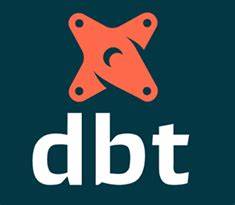Streamlining Data Transformations with dbt-core and Containerized Workflows
In today’s data-driven world, automating and streamlining data transformations is key. Recently, I set up a development and deployment pipeline that leverages dbt-core for transformation logic on a PostgreSQL database, integrated with VSCode and devcontainers for a reproducible local development environment. The full CI/CD process is driven by GitHub Actions for building and pushing container images, while Cronnicle handles scheduled execution. Here’s a walkthrough of my setup and my evolving experience with dbt.
A Journey with dbt: Then and Now
I first tried dbt a few years ago, and honestly, I wasn’t impressed—it felt like nothing more than a glorified SQL query runner. However, as the tool has evolved, so has my opinion. The introduction of features like snapshot capabilities, incremental materialization, and data lineage visualization have transformed dbt into an invaluable asset for managing data transformations. These features not only enhance efficiency but also provide a clearer picture of data dependencies and workflows.
Development Environment with VSCode and Devcontainers
To ensure a consistent development environment across the team, I use VSCode’s devcontainer feature. This approach allows me to define a containerized development environment with all the necessary dependencies for dbt-core and PostgreSQL. By encapsulating the setup within a container, new team members can quickly get started without worrying about local configuration issues.
Key advantages include:
- Consistency: Every developer works in an identical environment regardless of their host OS.
- Isolation: Dependencies for dbt and PostgreSQL are managed separately from the local machine.
- Ease of Onboarding: A ready-to-go devcontainer minimizes setup time for new team members.
dbt-core: A Powerful Data Transformation
dbt-core empowers data analysts and engineers to transform data in PostgreSQL using SQL-based transformation logic. By treating SQL as code, dbt-core enforces best practices like version control and modularity. In our setup:
- SQL models are developed, tested, and versioned within the project.
- Snapshots and incremental models now make it easier to track changes over time and improve performance, while data lineage visualization provides insight into how data flows through our system.
CI/CD Pipeline with GitHub Actions
To automate builds and deployments, GitHub Actions is at the heart of our CI/CD pipeline. Here’s how it works:
- Build: Every commit triggers a workflow that builds a new container image, which includes the latest version of our dbt-core project and its dependencies.
- Deploy: Once built, the image is pushed to our container registry. This automated process ensures that our production environment always runs the most recent version of our data transformation logic.
This integration minimizes manual intervention and enhances the reliability of our deployments.
Scheduled Runs with Cronnicle
After deploying our container image, the next step is execution. Instead of relying on manual scheduling or ad hoc triggers, Cronnicle is used to pull and run the container image on a set schedule. This automation:
- Ensures Timely Execution: Data transformations run at regular intervals without human intervention.
- Simplifies Maintenance: Cron-based scheduling abstracts the complexity of handling recurring tasks.
By combining GitHub Actions and Cronnicle, the complete workflow—from code change to scheduled execution—is fully automated, reducing downtime and the risk of human error.
Final Thoughts
This containerized approach to developing, deploying, and scheduling dbt-core projects on a PostgreSQL database exemplifies modern DevOps practices. While my early experience with dbt left me skeptical, its current features—especially snapshots, incremental materialization, and data lineage visualization—have significantly enhanced its utility. With VSCode and devcontainers ensuring a uniform development environment, GitHub Actions streamlining CI/CD, and Cronnicle managing scheduled execution, the entire process becomes efficient, reliable, and scalable.
